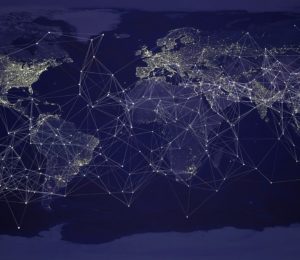Differentiating rate limits in Apache APISIX
- August 05, 2024
- 4188 Unique Views
- 4 min read
In my talk Evolving your APIs, I mention that an API Gateways is a Reverse Proxy "on steroids". One key difference between the former and the latter is that the API Gateway is not unfriendly to business logic. The poster child is rate-limiting.
Rate-limiting is an age-old Reverse Proxy feature focused on protecting against DDoS attacks. It treats all clients the same and is purely technical. In this day and age, most API providers offer different subscription tiers; the higher the tier, the higher the rate limit, and the more you pay incidentally. It's not technical anymore and requires to differentiate between clients.
In this post, I want to detail how to do it with Apache APISIX. Note I take most of the material from the workshop.
Rate-limiting for the masses
Apache APISIX offers no less than three plugins to rate limit requests:
- limit conn: limits the number of concurrent requests
- limit req: limits the number of requests based on the Leaky Bucket algorithm
- limit count: limits the number of requests based on a fixed time window
The limit-count plugin is a good candidate for this post.
Let's configure the plugin for a route:
routes:
- uri: /get
upstream:
nodes:
"http://httpbin.org:80": 1
plugins:
limit-count: #1
count: 1 #2
time_window: 60 #2
rejected_code: 429 #3
#END
- Set the
limit-countplugin - Limit requests to one every 60 seconds
- Override the default HTTP response code, i.e.,
503
At this point, we configured regular rate limiting.
curl -v http://localhost:9080/get curl -v http://localhost:9080/get
If we execute the second request before a minute has passed, the result is the following:
HTTP/1.1 429 Too Many Requests Date: Tue, 09 Jul 2024 06:55:07 GMT Content-Type: text/html; charset=utf-8 Content-Length: 241 Connection: keep-alive X-RateLimit-Limit: 1 #1 X-RateLimit-Remaining: 0 #2 X-RateLimit-Reset: 59 #3 Server: APISIX/3.9.1 <html> <head><title>429 Too Many Requests</title></head> <body> <center><h1>429 Too Many Requests</h1></center> <hr><center>openresty</center> <p><em>Powered by <a href="https://apisix.apache.org/">APISIX</a>.</em></p></body> </html>
- Configured limit
- Remaining quota
- Waiting time in seconds before quota replenishment
Per-consumer rate limiting
To configure per-consumer rate limiting, we first need to implement request authentication. APISIX offers many authentication plugins; we shall use the simplest one, key-auth. key-auth checks a specific HTTP request header - apikey by default.
Here's how we configure consumers:
consumers:
- username: johndoe #1
plugins:
key-auth:
key: john #2
- username: janedoe #1
plugins:
key-auth:
key: jane #2
- Users
- HTTP header request value
curl -H 'apikey: john' localhost:9080/get #1 curl -H 'apikey: jane' localhost:9080/get #2
- Authenticate as
johndoe - Authenticate as
janedoe
In general, you attach plugins to APISIX routes but can also attach them to consumers. We can now move the limit-count plugin.
routes:
- uri: /get
upstream:
nodes:
"httpbin:80": 1
plugins:
key-auth: ~ #1
consumers:
- username: johndoe
plugins:
key-auth:
key: john
limit-count:
count: 1 #2
time_window: 60
rejected_code: 429
- username: janedoe
plugins:
key-auth:
key: jane
limit-count:
count: 5 #2
time_window: 60
rejected_code: 429
#END
- The route is only accessible to requests authenticating with
key-auth johndoehas a lower limit count thanjanedoe. Did he forget to pay his subscription fees?
curl -H 'apikey: john' localhost:9080/get curl -H 'apikey: john' localhost:9080/get curl -H 'apikey: jane' localhost:9080/get curl -H 'apikey: jane' localhost:9080/get
The second request gets rate-limited.
Per-group rate limiting
We never attach permissions directly to identities in Identity Management systems. It's considered bad practice because when a person moves around the organization, we need to add and remove permissions one by one. The good practice is to attach permissions to groups and set the person in that group. When the person moves, we change their group; the person loses permissions from the old group and gets permissions from the new group. People get their permissions transitively via their groups.
Apache APISIX offers an abstraction called a Consumer Group for this.
Let's create two consumer groups with different rate limit values:
consumer_groups:
- id: 1
plugins:
limit-count:
count: 1
time_window: 60
rejected_code: 429
- id: 2
plugins:
limit-count:
count: 5
time_window: 60
rejected_code: 429
The next step is to attach consumers to these groups:
consumers:
- username: johndoe
group_id: 1
plugins:
key-auth:
key: john
- username: janedoe
group_id: 2
plugins:
key-auth:
key: jane
curl -H 'apikey: john' localhost:9080/get curl -H 'apikey: john' localhost:9080/get curl -H 'apikey: jane' localhost:9080/get curl -H 'apikey: jane' localhost:9080/get
The second request gets rate-limited.
We have the same results as before with two benefits. The first one is as I wrote above: when consumers move in and out, they change their permissions accordingly.
The second benefit is that the limit count is shared among all consumers of a group. Indeed, when you set a limit, you don't want each consumer to be rate limited at X requests per Y second; you want the group as a whole to share the limit. In this way, if a single consumer is very active, they will naturally cap the rate of other consumers who share the same group.
Of course, you can set a limit on both a consumer and the group it belongs to. In this case, the lowest limit will apply first.
consumers:
- username: johndoe
group_id: 2 #1
plugins:
key-auth:
key: john
limit-count:
count: 1 #2
time_window: 60
rejected_code: 429
- username: janedoe
group_id: 2
plugins:
key-auth:
key: jane
- Move
johndoeto group 2 - Limit him individually
curl -H 'apikey: john' localhost:9080/get curl -H 'apikey: john' localhost:9080/get #1
johndoehits the limit here, butjanedoenow only has four requests left from this minute, as the former used one request
Conclusion
In this post, we implement rate limiting with Apache APISIX. We set the rate limit on a route and moved it to individual consumers. Then we moved it to consumer groups, so all consumers in a group share the same "pool".
The complete source code for this post can be found on GitHub.
To go further:
Originally published at A Java Geek on July 21st, 2024
Redis Released: A Worldwide In-Person Event Series
We’re talking new releases & fast AI, all over the world!
Watch the Replays Here
Don’t Forget to Share This Post!












Comments (1)
Java Weekly, Issue 554 | Baeldung
1 year ago[…] >> Differentiating rate limits in Apache APISIX [foojay.io] […]